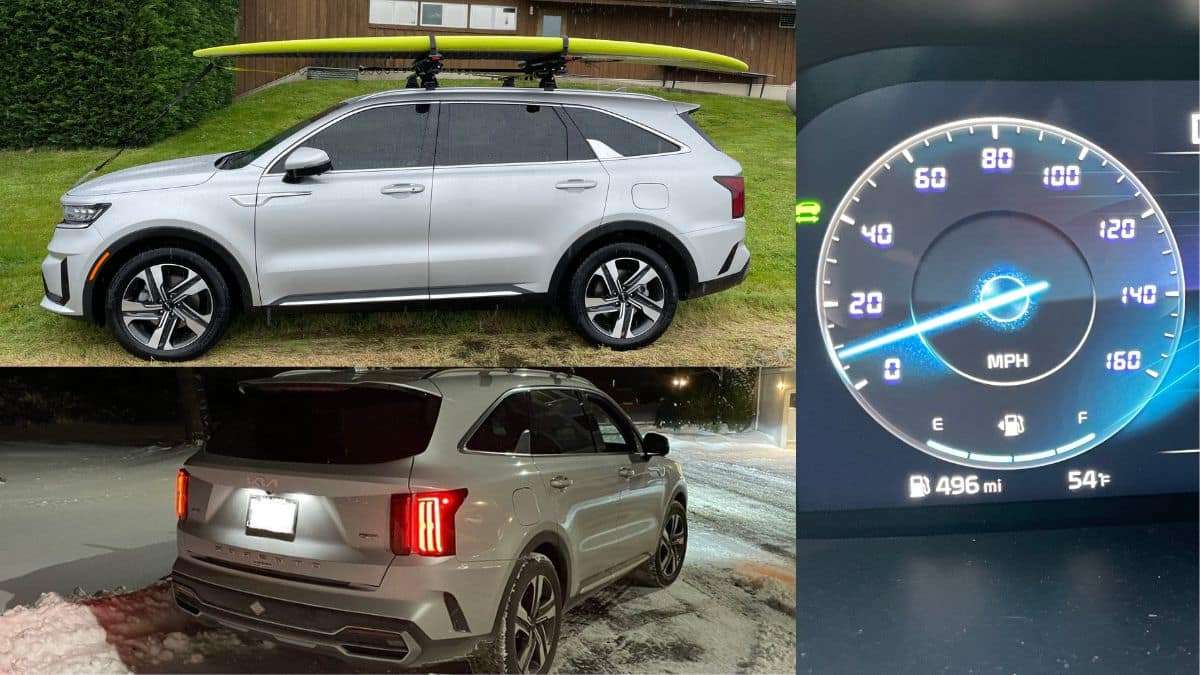Back in March I wrote a piece about how I manage to get over 1,000 miles on a single tank of gas in my Kia Sorento Plug-In Hybrid (PHEV). Update on that, I continued to stretch my single tank of gas all the way to almost 1,500 miles and only today, 4 months after my last visit to a gas station, filled it up with 8 gallons. I could have easily gone a few hundred more miles before filling up, and waited 4 more weeks to do it as I don’t have a long trip planned until Memorial Day Weekend, but I wanted to be ready for a possible weekend getaway before then, should the opportunity present itself. So I schelpped myself and my daughter to the big box gas station, waited in line for at least a good 7 minutes before getting my turn. I find that kind of ironic when I think about all the people who complain about having to wait to charge an EV, or about the time it takes to charge an EV since only a weekend before on a 600 miles round trip in my Tesla Model 3 not only did I never have to wait for anyone to finish before plug-in in my Tesla, the longest I had to wait to charge was about 15 minutes (and I didn’t wait as I was busy using the facilities and stretching my legs or having a quick snack). I know that longer waits do happen, especially for drivers of non-Tesla EVs, but it is more of an exception than the norm (at least if one takes time to research their route and charger utilization). But back to the point of this story: after gassing up today my total range estimated (with a full tank of gas but only about 80% charge on my battery) was an impressive 496 miles!
Focusing on that last bit for a second, this means I would have had over 500 miles of estimated range showing on the dash had my battery also been full. That is about 10% better than the EPA estimated maximum range for my PHEV. The way I pulled this off, as you can read in the link to my previous article above, is by driving on one tank of gas for about 4 months, rarely using gas (obviously) during that span except for one long 200 mile trip and several small trips that used just a fraction of a gallon here and there, and recharging my battery a lot! In fact, here’s how much of my driving was on electricity each month between fill ups: January (the month of the 200 mile drive and previous fill-up) was 56.2% on electricity, February was 89.3%, March was 86.8%, and April was 93.9%. Obviously, not everyone has the same driving habits as I do, and anyone that regularly took drives longer than 100 miles would have a hard time replicating my results (for example someone who commutes 100 miles or more for work on a daily or weekly basis). I would humbly suggest that such usage scenarios aren’t the ideal for PHEV use, rather those are ideal scenarios for EVs or standard hybrid electric vehicles (i.e. non plug-in, or HEVs), unless perhaps one is able to charge at both ends of a commute or has a long enough break in the middle of such a drive to recharge their PHEV.
That suggestion is about something I also see a lot of people posting about, even arguing about on social media: whether a PHEV makes sense for all drives and scenarios. The truth is simply that they do not since they cost more and stretch out their cost savings model beyond the usable lifespan of the vehicle should one not be able to use them in all electric mode for 50% or more of their total miles.
So there you have it, the cheat code for hacking your PHEVs total estimated range is to really maximize the amount of all electric driving you do by plugging in often and driving it in the way one needs to to keep it in EV mode as often as possible. Have any questions about how this works, or why? Please leave them below.
Images courtesy of Justin Hart
Justin Hart has owned and driven electric vehicles for over 15 years, including a first generation Nissan LEAF, second generation Chevy Volt, Tesla Model 3, an electric bicycle and most recently a Kia Sorento PHEV. He is also an avid SUP rider, poet, photographer and wine lover. He enjoys taking long EV and PHEV road trips to beautiful and serene places with the people he loves. Follow Justin on Twitter for daily KIA EV news coverage.





